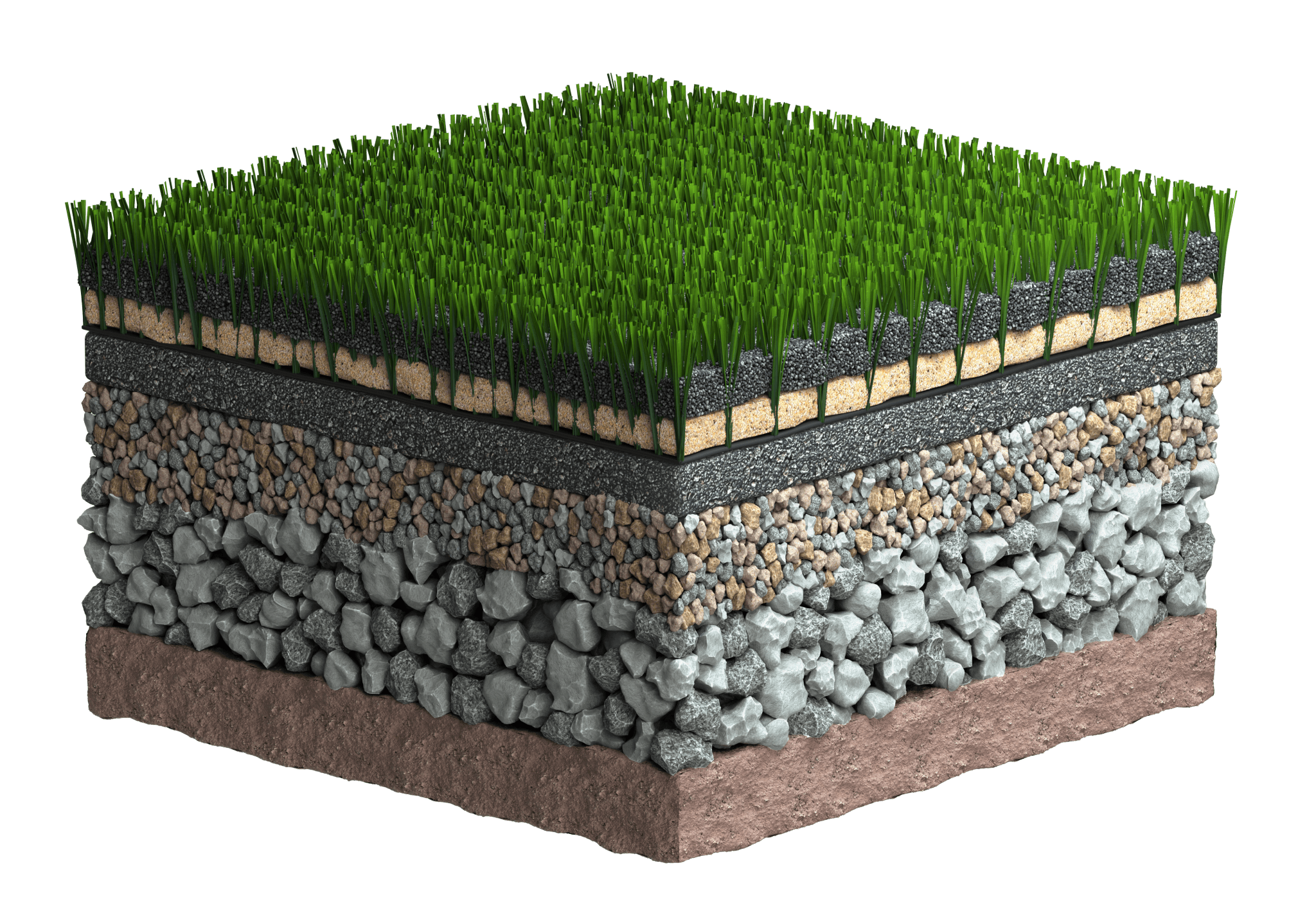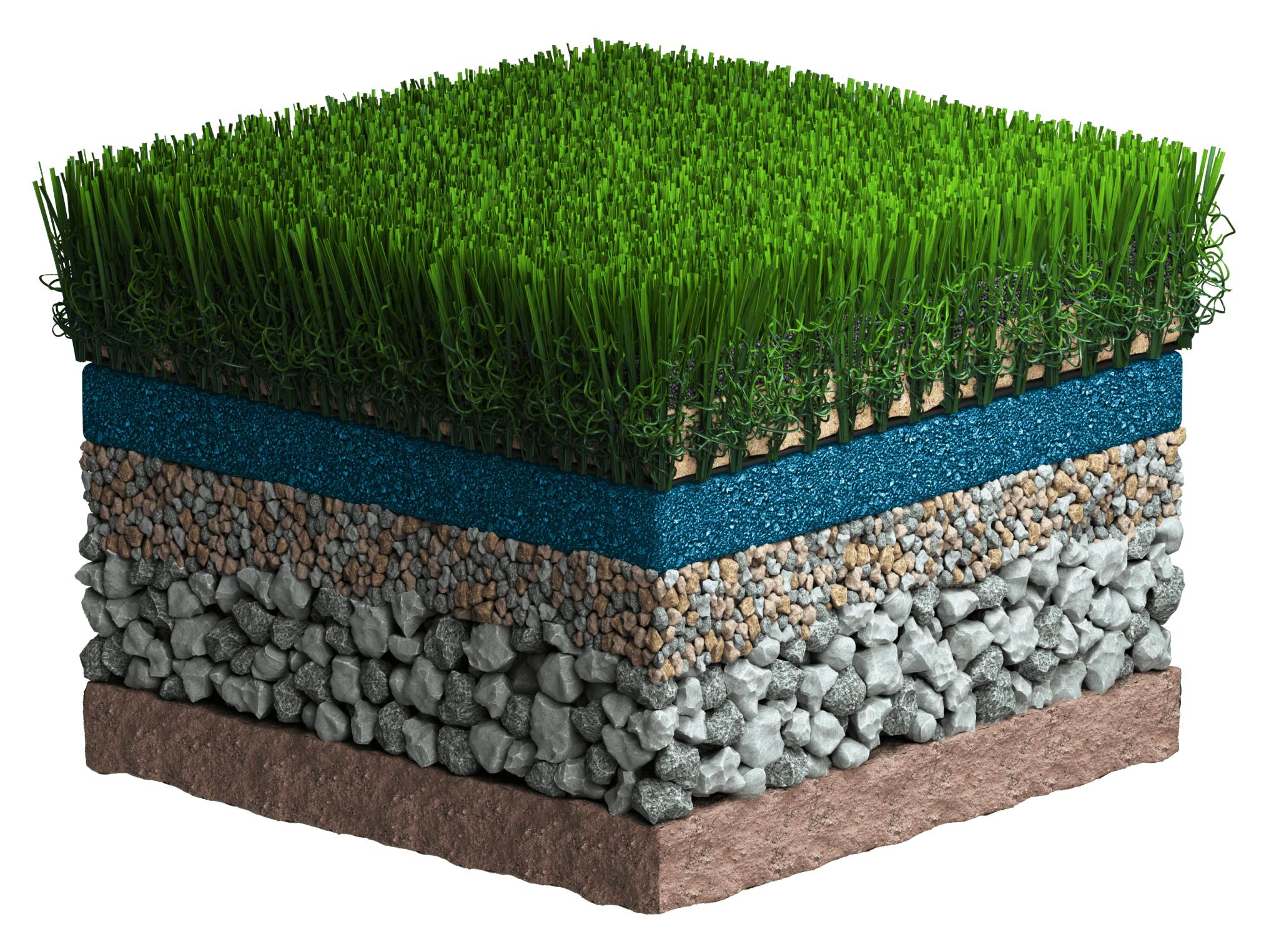Ground up to finished pitch – a quick guide
- 09/03/2020
Having played sport, but also been involved with synthetic turf for many years, I naturally focus on what is under my feet, and normally that focus extends only as far as the actual playing surface. What I am not concerned with, and I assume the same is true with most users, is what lies beneath the ground.
In the synthetic turf industry you will probably find that most consultants and all contractors tend to start looking at a field from bottom up. Companies that install, start a little higher, normally with what they will lay the turf on. There is nothing wrong with this, but most synthetic turf manufacturers will look at it the other way round, in other words top down.
Let’s assume we have selected the right playing surface for your sport. The first question is, whether a shock pad is needed, or will it go straight onto the base. If a pad is chosen, we need to check it has been tested with the chosen turf, and then we can look at what is needed beneath.
The final base stone (blinding layer), that the pad or turf is laid onto, needs to be compacted so that is can be walked on without disturbing the levels, or be a bound layer of porous asphalt. It needs to be firm, with no soft areas, and must drain freely. It also needs to be level, with no bumps or dips. Around the pitch sides there needs to be an edging detail for the pad and turf to butt up to. In the case of hockey this also needs to include some kind of grip system.
Beneath the final base layer is the majority of the pitch construction. This varies from pitch to pitch, country to country, but in principal has the same roles wherever it is. In simple terms it must:
-
Provide a foundation on which the playing system is laid.
-
Offer a fast and effective free drainage system, through porous stone, under pitch drainage and perimeter drains leading to a suitable outfall.
The first work on a new pitch will involve removing any vegetation, and then levelling the base before the drainage and construction work begins. This is where the ‘Design & Build’ element begins for the contractor. The type of construction specification, material costs and its overall depth is the most expensive part of the pitch, and needs an experienced company to carry out this work before eventually leading to the final CCGrass surface being installed on top.
The contractor will also take responsibility for the design of the perimeter fencing and lighting system used.






